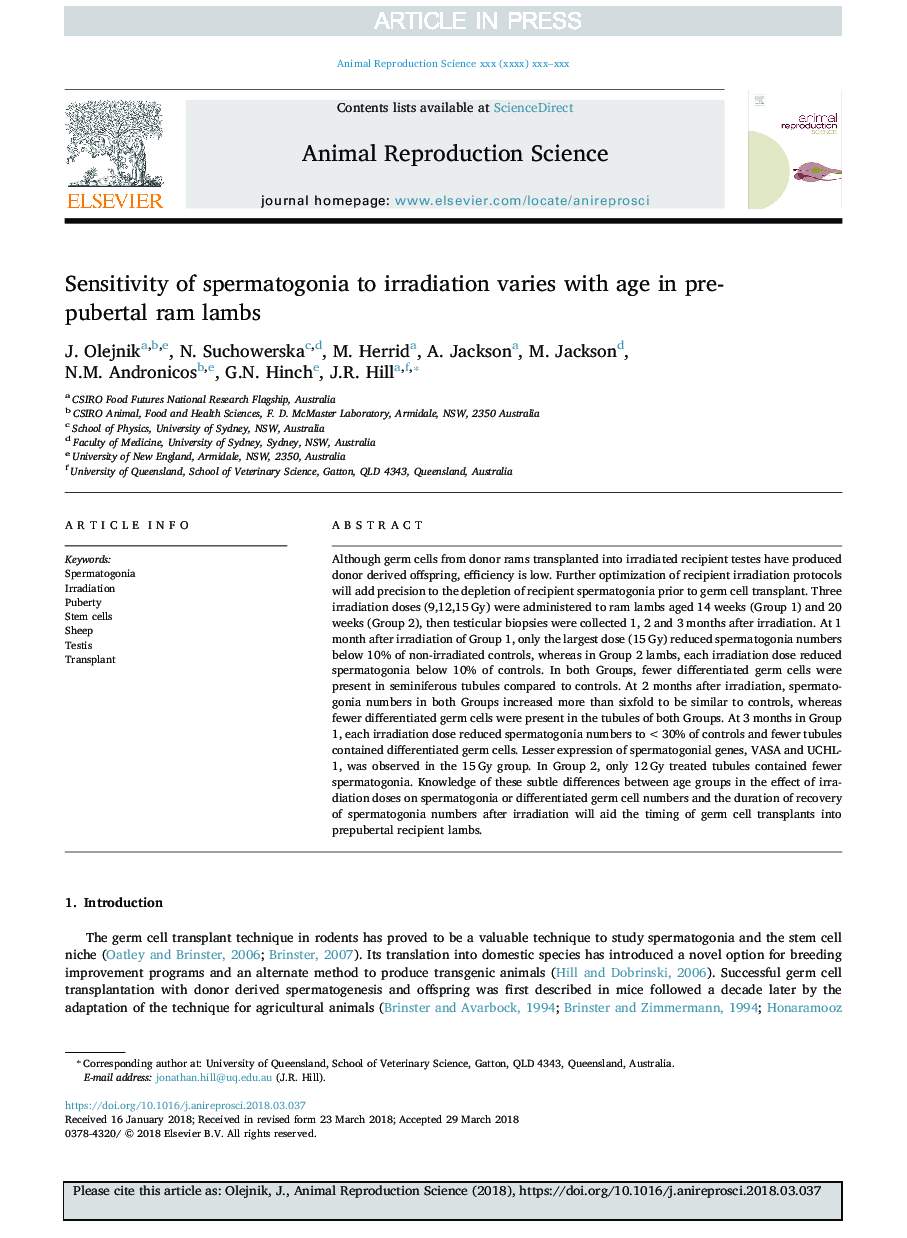| Article ID | Journal | Published Year | Pages | File Type |
|---|---|---|---|---|
| 8403835 | Animal Reproduction Science | 2018 | 10 Pages |
Abstract
Although germ cells from donor rams transplanted into irradiated recipient testes have produced donor derived offspring, efficiency is low. Further optimization of recipient irradiation protocols will add precision to the depletion of recipient spermatogonia prior to germ cell transplant. Three irradiation doses (9,12,15â¯Gy) were administered to ram lambs aged 14 weeks (Group 1) and 20 weeks (Group 2), then testicular biopsies were collected 1, 2 and 3 months after irradiation. At 1 month after irradiation of Group 1, only the largest dose (15â¯Gy) reduced spermatogonia numbers below 10% of non-irradiated controls, whereas in Group 2 lambs, each irradiation dose reduced spermatogonia below 10% of controls. In both Groups, fewer differentiated germ cells were present in seminiferous tubules compared to controls. At 2 months after irradiation, spermatogonia numbers in both Groups increased more than sixfold to be similar to controls, whereas fewer differentiated germ cells were present in the tubules of both Groups. At 3 months in Group 1, each irradiation dose reduced spermatogonia numbers to <30% of controls and fewer tubules contained differentiated germ cells. Lesser expression of spermatogonial genes, VASA and UCHL-1, was observed in the 15â¯Gy group. In Group 2, only 12â¯Gy treated tubules contained fewer spermatogonia. Knowledge of these subtle differences between age groups in the effect of irradiation doses on spermatogonia or differentiated germ cell numbers and the duration of recovery of spermatogonia numbers after irradiation will aid the timing of germ cell transplants into prepubertal recipient lambs.
Related Topics
Life Sciences
Agricultural and Biological Sciences
Animal Science and Zoology
Authors
J. Olejnik, N. Suchowerska, M. Herrid, A. Jackson, M. Jackson, N.M. Andronicos, G.N. Hinch, J.R. Hill,
